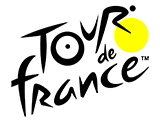- Stage town for the 24th time
- Commune in Isère (38)
- Population: 2,900 (Bourcats and Bourcates)
The peloton usually passes through Bourg d’Oisans as it heads for the climb up to Alpe d’Huez. The commune in Isère has also been the starting point for many historic mountain stages. The first time these two events combined was in 1952 when Fausto Coppi achieved back-to-back victories at Alpe d’Huez and Sestrières. However, Saint-Étienne is more often the destination when the riders depart Bourg d’Oisans. This stage has been run on five occasions, victory going to Franco Chioccoli in 1992, Max Sciandri in 1995, Ludo Dierckxsens in 1999, Marcus Burghardt in 2008 and Mads Pedersen in 2022.
LE BOURG D'OISANS
Galta Museum
Housed in the attic of Saint Laurent Church, the museum of minerals and fauna of the Alps, now the Galta Museum, occupies a privileged and original space. The richness of its mineralogical collection and the dynamic presentation of the fauna make it a wonderful place to discover the natural and cultural heritage of Oisans. As the visitor centre for the Écrins National Park, the museum transports visitors to the heart of the park through projections. Renovated between 2023 and 2025, the museum now offers a sensory and interactive scenography.
Roman road of Rochetaillée
The road carved into the Rochetaillée cliff, with its corbelled path overlooking the hamlet, is there to remind us that this name is no coincidence. The origin of this road carved into the rock is lost in the folds of local history. Whether it was a Roman road or a road carved into the rock at a time when the valley was covered by a lake, the mystery remains. In any case, the history of the commune is closely linked to the tumultuous hydraulic life of the plain. The ancient Roman road allowed people to travel between Gaul and Italy along Lake Saint Laurent, which covered the Bourg d'Oisans plain until 1219. This Roman road is also listed in the Peutinger Table.
The "Colette-Anne" organ
Installed in the Saint-Laurent church in Bourg-d'Oisans, the Resurrection organ found its place in the complex architecture of the building at the end of 2015. The adventure of its creation is the result of what drives human beings forward today: audacity, imagination, inventiveness and open-mindedness. Shaped like a skylight, the instrument was also named the Colette-Anne organ, after the organist Colette Oudet, whose husband financed the work. The organ was built by the organ builder Giroud based on plans by architect Martin Bacot.
http://orgues.free.fr/bourgdoisans/index.html
The lakes
Whether it's Lauvitel, accessible by hiking (part of which is classified as a nature reserve), Petites Sources-Lac Bleu, or Buclet, Bourg d'Oisans stands out for the exceptional natural environment of these areas. With their deep turquoise blue waters, or frozen in winter, these natural areas are real gems of the commune.
https://www.ecrins-parcnational.fr/thematique/reserve-integrale-du-lauvitel
Gaspard le Cristallier, giant of Bourg d'Oisans
This is a traditional giant, carried in the same way as those found in northern France, Belgium, Spain and many other parts of the world. However, he is the only giant carried in the Auvergne-Rhône-Alpes region. Named in 2018, in reference to Gaspard de la Meije (mountaineer) and the profession of crystal hunter, which is still present in the town, he is a real attraction but also a promotional tool for the area.
The Vernes factory
Founded: 1918
History: the Vernes hydroelectric power station is a model of prestigious industrial architecture. Today, only three listed hydroelectric power stations are still in operation. Its exceptionally rapid construction (two years) was intended to contribute to the war effort. The celebration of its centenary provided an opportunity to honour its creator, Charles-Albert Keller, a great industrialist who played a major role in shaping the Val de Livet, but who also wanted to demonstrate that hydroelectric power and tourism were compatible.
Listed as: Historic Monument since 1994.
https://www.oisans.com/patrimoine-culturel/centrale-des-vernes/
Écrins National Park The Écrins National Park is one of France's 10 national parks. With a core area of 91,800 hectares (protected zone), it is home to a rich and diverse natural heritage, including many rare or endangered species. The fauna and flora can be discovered in the museum area of the Maison du Parc in Bourg d'Oisans or in the field with the help of guides or high mountain guides. The "Rando Ecrins" website offers around a hundred online itineraries with descriptions of more than 800 illustrated heritage features.
http://rando.ecrins-parcnational.fr








